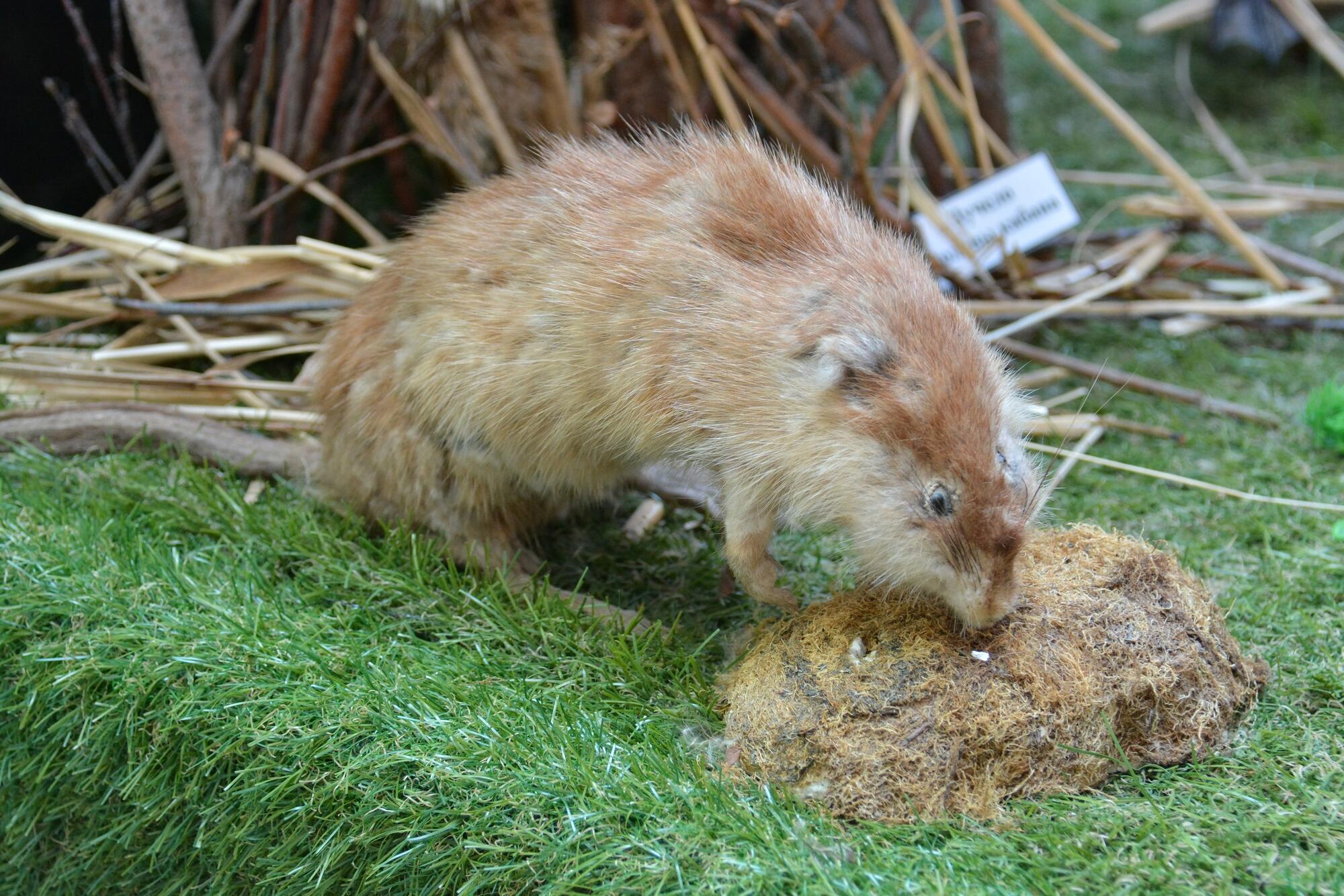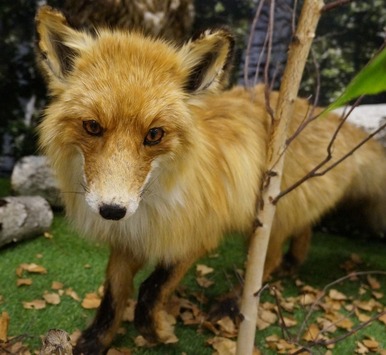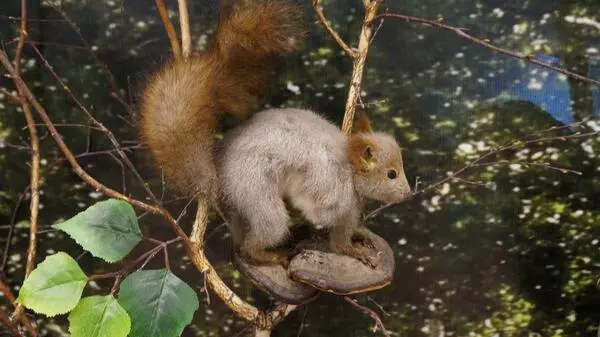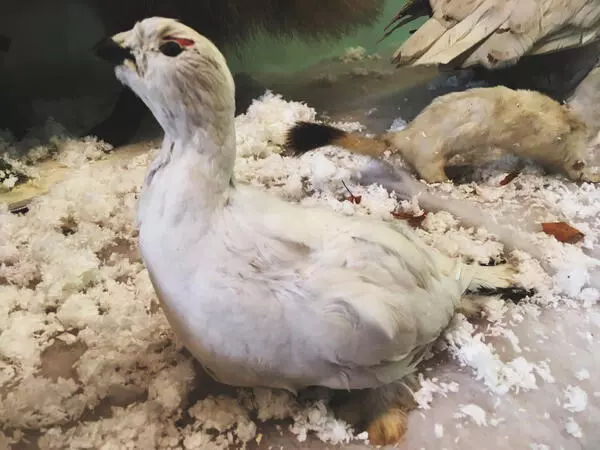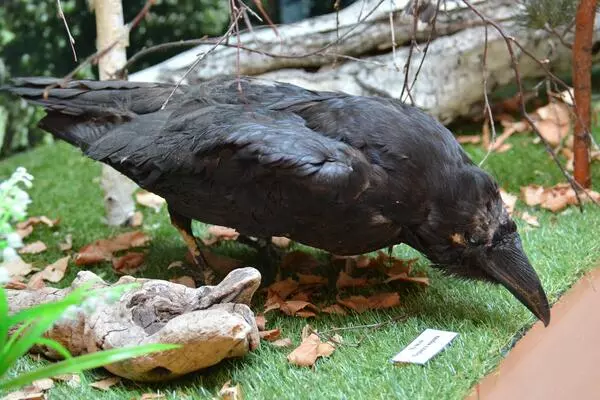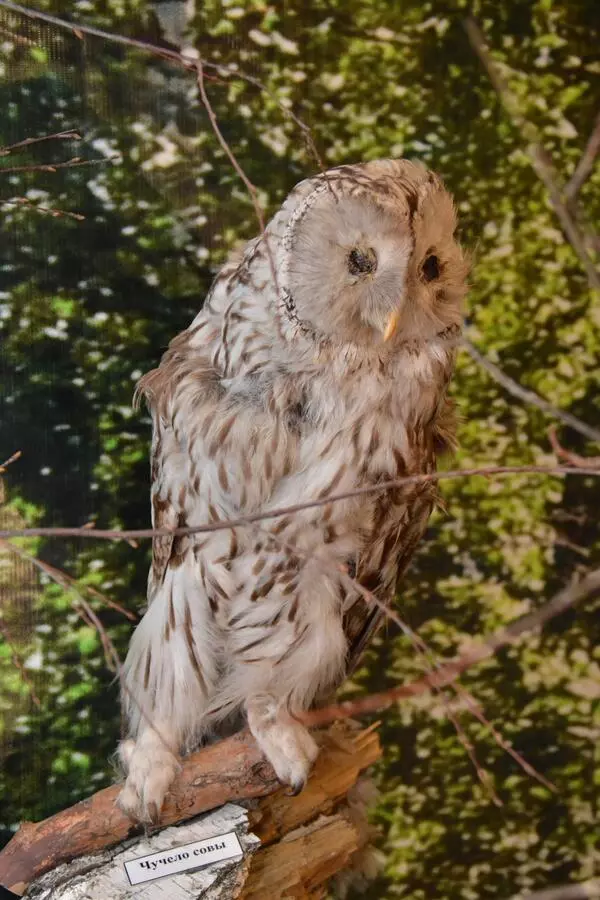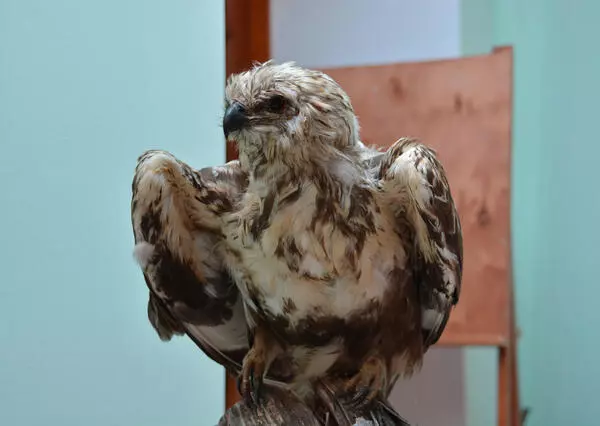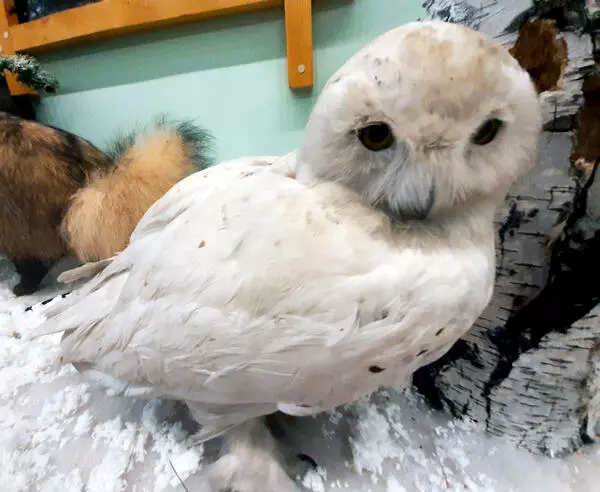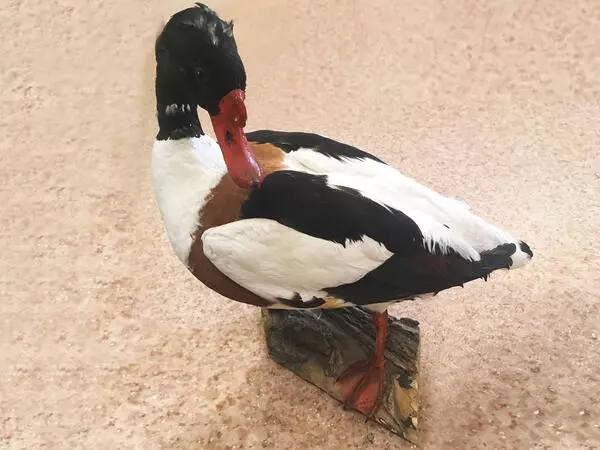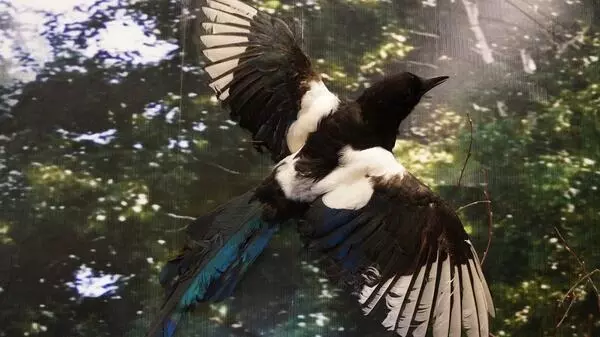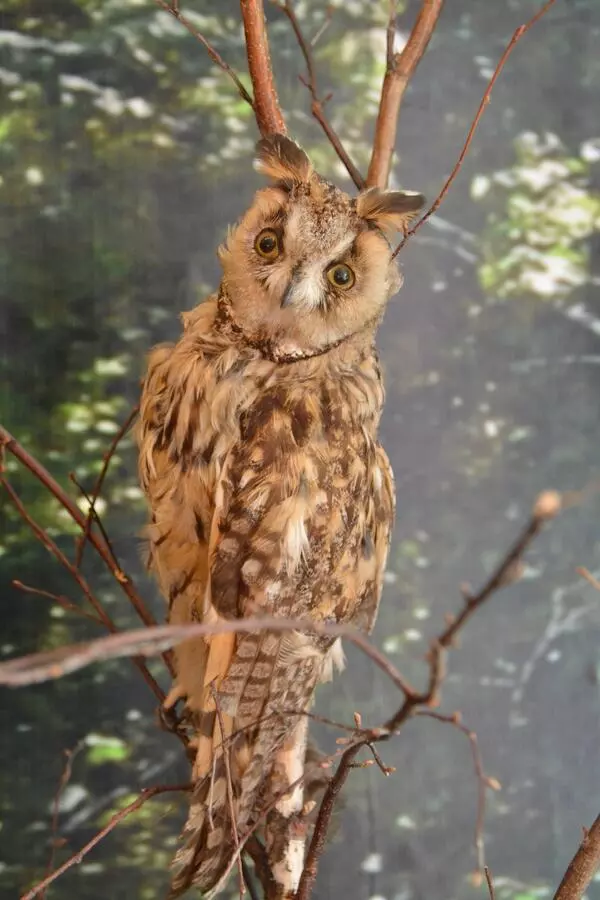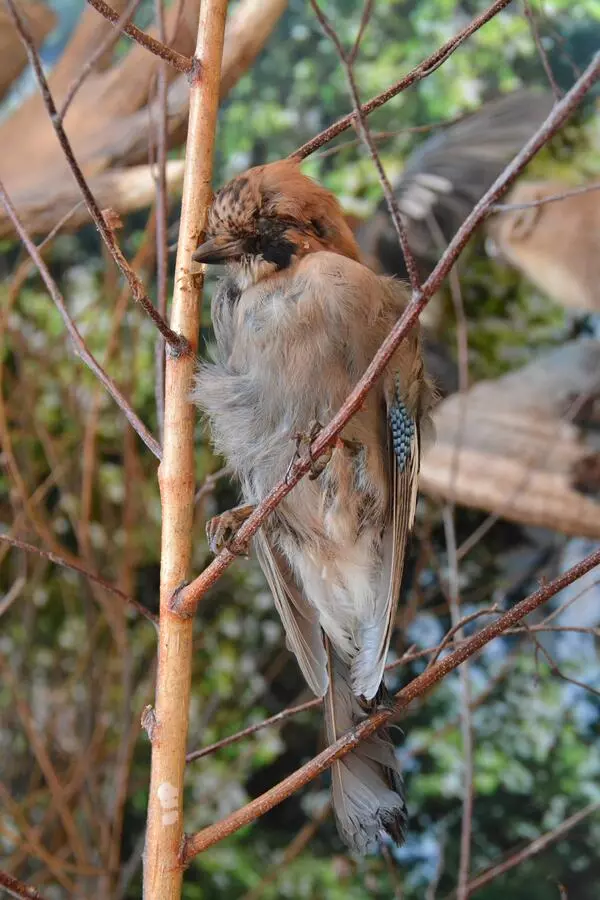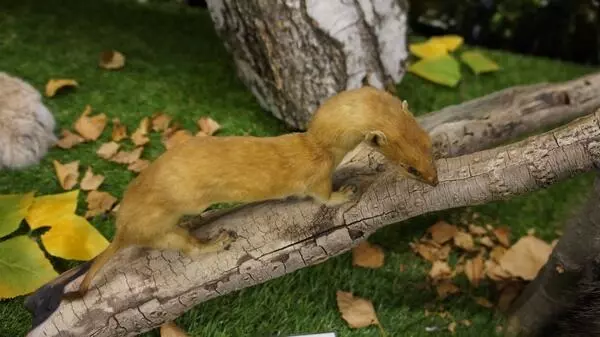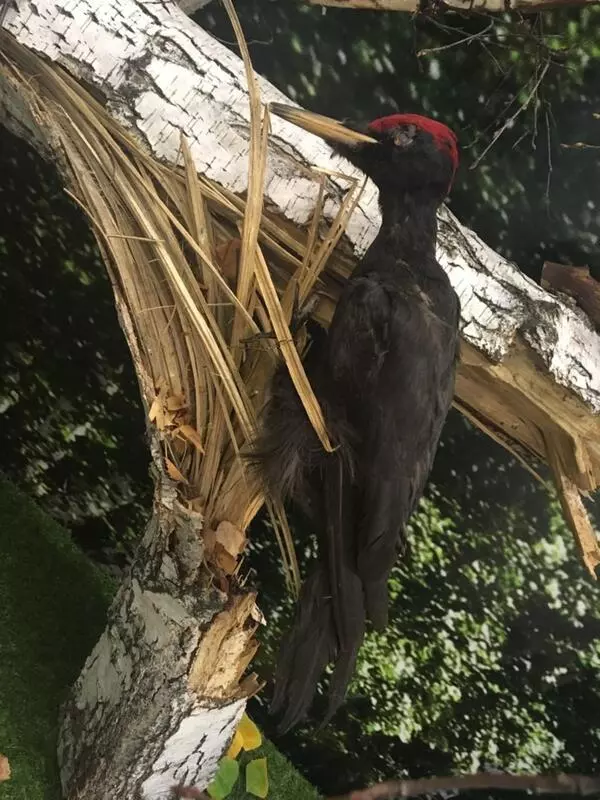The muskrat is a mammal in the family Cricetidae /krī-ˈsēt-ə-ˌdē/. The muskrat looks much like the brown rat but is much bigger than it, with an adult muskrat’s average weight reaching 1.5 kilos. The muskrat’s appearance is clearly indicative of the adaptations to the semiaquatic lifestyle. Its ears hardly stick out of the fur, while its eyes are positioned very high on the head. Like the beaver’s lips, the muskrat’s lips grow around the incisors, isolating them from the oral cavity. Thanks to this adaptation, the muskrat can cut trees underwater without spluttering.
The muskrat is semiaquatic. It inhabits banks of rivers, lakes, and canals, and loves freshwater marshes. It prefers shallow waterbodies that do not freeze in winter and have banks overgrown with dense grass.
The muskrat is neither nocturnal nor diurnal, but it is most active after sunset and in the early morning. The animal feeds on waterside and water plants, such as the cane, reed, rush, sedge, puzzlegrass, and arrowhead. The muskrat eats young stems and leaves in spring, bottom parts and rootstock in summer and fall, and rootstock only in winter. The muskrat’s diet includes a small portion of crops and animal food represented by mussels, frogs, and fish.
The muskrat dig burrows and builds push-ups. The burrow is dug into a high bank. The entrance is located underwater and is invisible from the outside, while the nesting chamber is above the water level. Occasionally, there are two levels of nesting chambers connected by tunnels in case the water level rises. The temperature in nesting chambers never drops below zero degrees Celsius, even when it is freezing cold. The muskrat makes a push-up—an above-water shelter with a height of 1.5 m constructed from vegetation and held together by mud—on low marshy banks. The entrance is underwater. The muskrat also constructs storages to cache food for winter and open floating nests—feeding bases.
The muskrat lives in family groups that have their own feeding grounds. Male muskrats mark their territory and are aggressive towards intruders. Muskrats gather in larger groups only in winter. In spring, female muskrats chase their grown kits away from the ground. There can be occasional incidents of cannibalism if there are too many muskrats in the same territory. The muskrat’s maximal lifespan is three years in the wild, while captive muskrats can live up to 10 years.
The muskrat is semiaquatic. It inhabits banks of rivers, lakes, and canals, and loves freshwater marshes. It prefers shallow waterbodies that do not freeze in winter and have banks overgrown with dense grass.
The muskrat is neither nocturnal nor diurnal, but it is most active after sunset and in the early morning. The animal feeds on waterside and water plants, such as the cane, reed, rush, sedge, puzzlegrass, and arrowhead. The muskrat eats young stems and leaves in spring, bottom parts and rootstock in summer and fall, and rootstock only in winter. The muskrat’s diet includes a small portion of crops and animal food represented by mussels, frogs, and fish.
The muskrat dig burrows and builds push-ups. The burrow is dug into a high bank. The entrance is located underwater and is invisible from the outside, while the nesting chamber is above the water level. Occasionally, there are two levels of nesting chambers connected by tunnels in case the water level rises. The temperature in nesting chambers never drops below zero degrees Celsius, even when it is freezing cold. The muskrat makes a push-up—an above-water shelter with a height of 1.5 m constructed from vegetation and held together by mud—on low marshy banks. The entrance is underwater. The muskrat also constructs storages to cache food for winter and open floating nests—feeding bases.
The muskrat lives in family groups that have their own feeding grounds. Male muskrats mark their territory and are aggressive towards intruders. Muskrats gather in larger groups only in winter. In spring, female muskrats chase their grown kits away from the ground. There can be occasional incidents of cannibalism if there are too many muskrats in the same territory. The muskrat’s maximal lifespan is three years in the wild, while captive muskrats can live up to 10 years.
